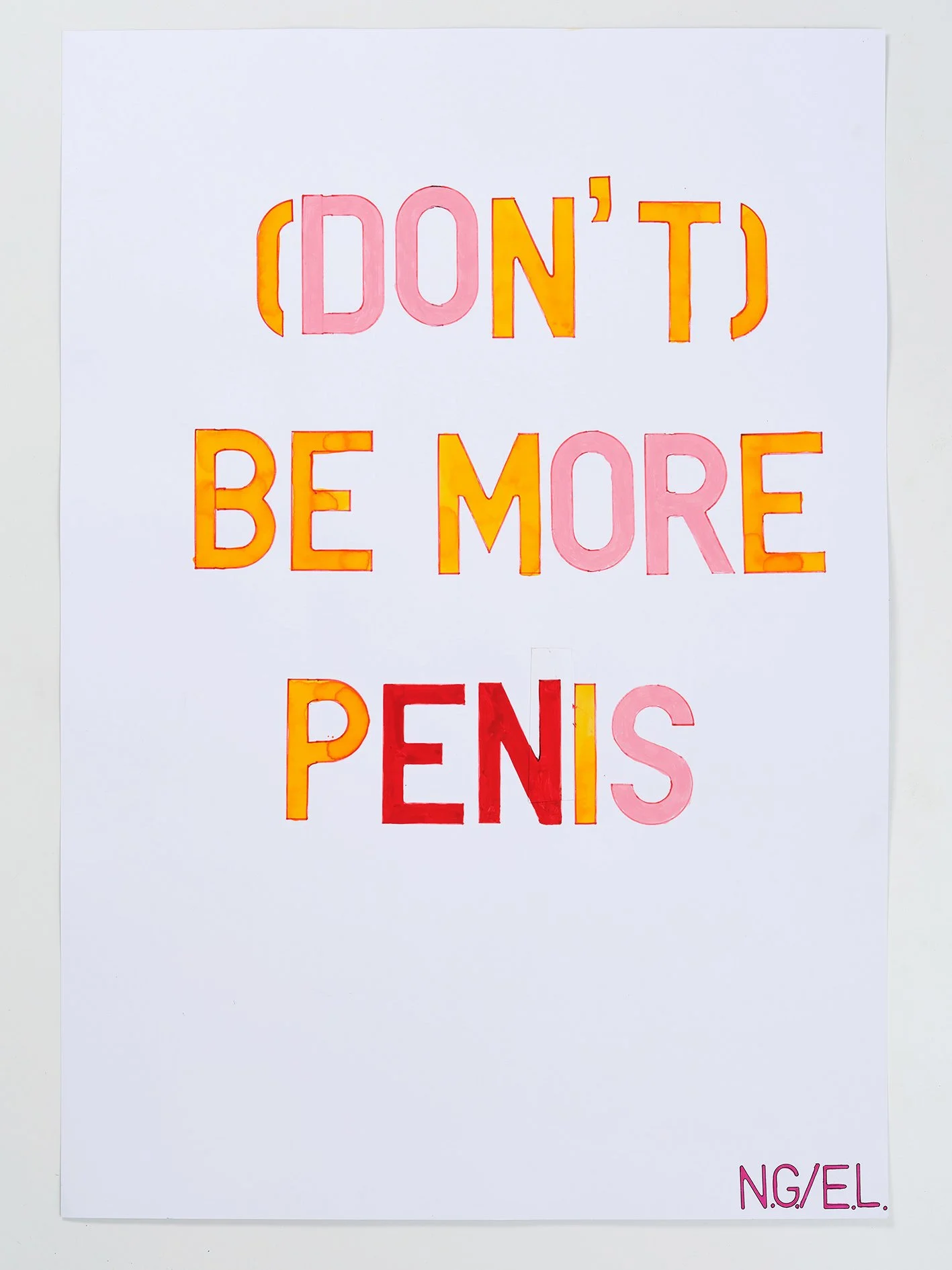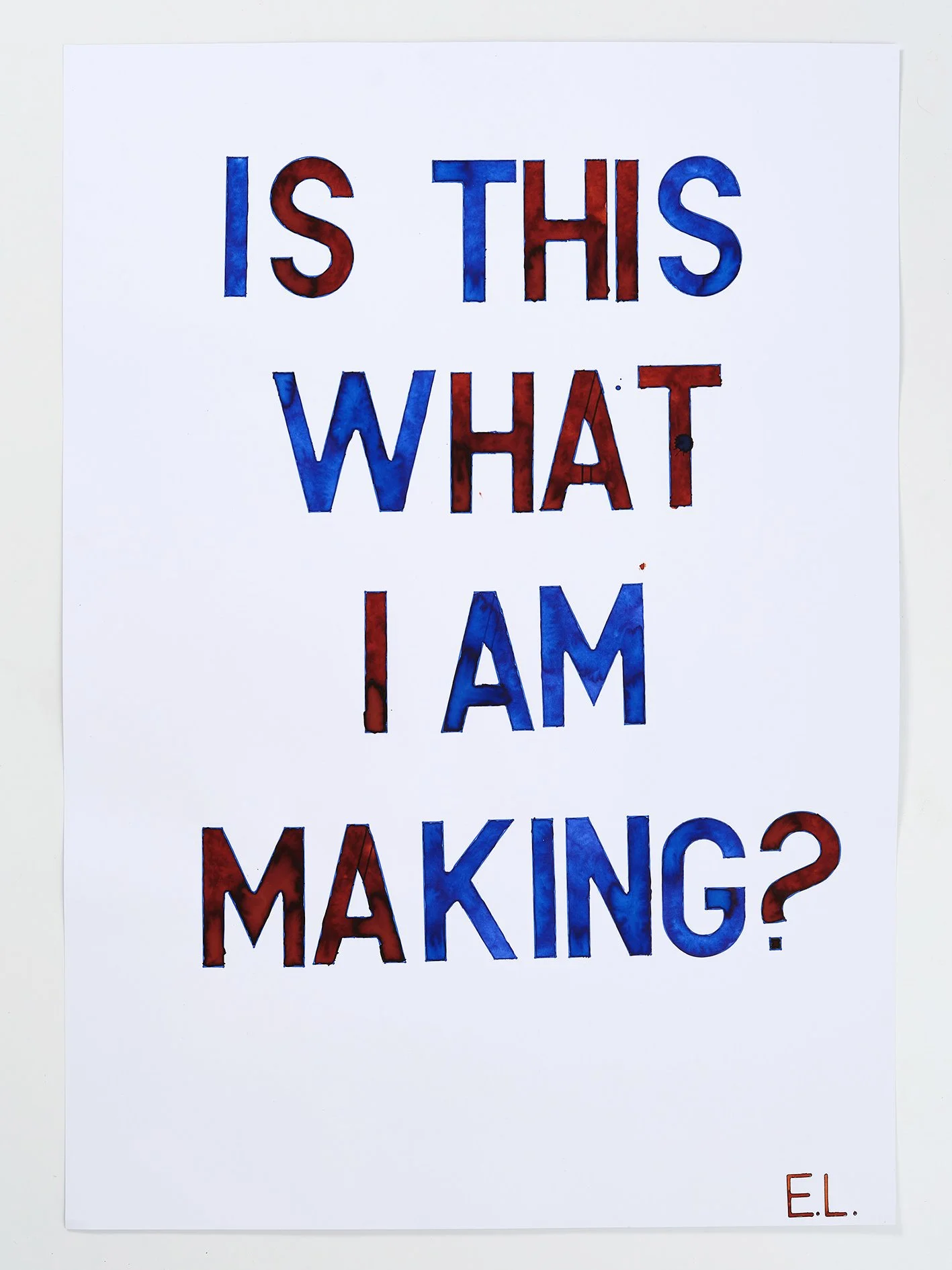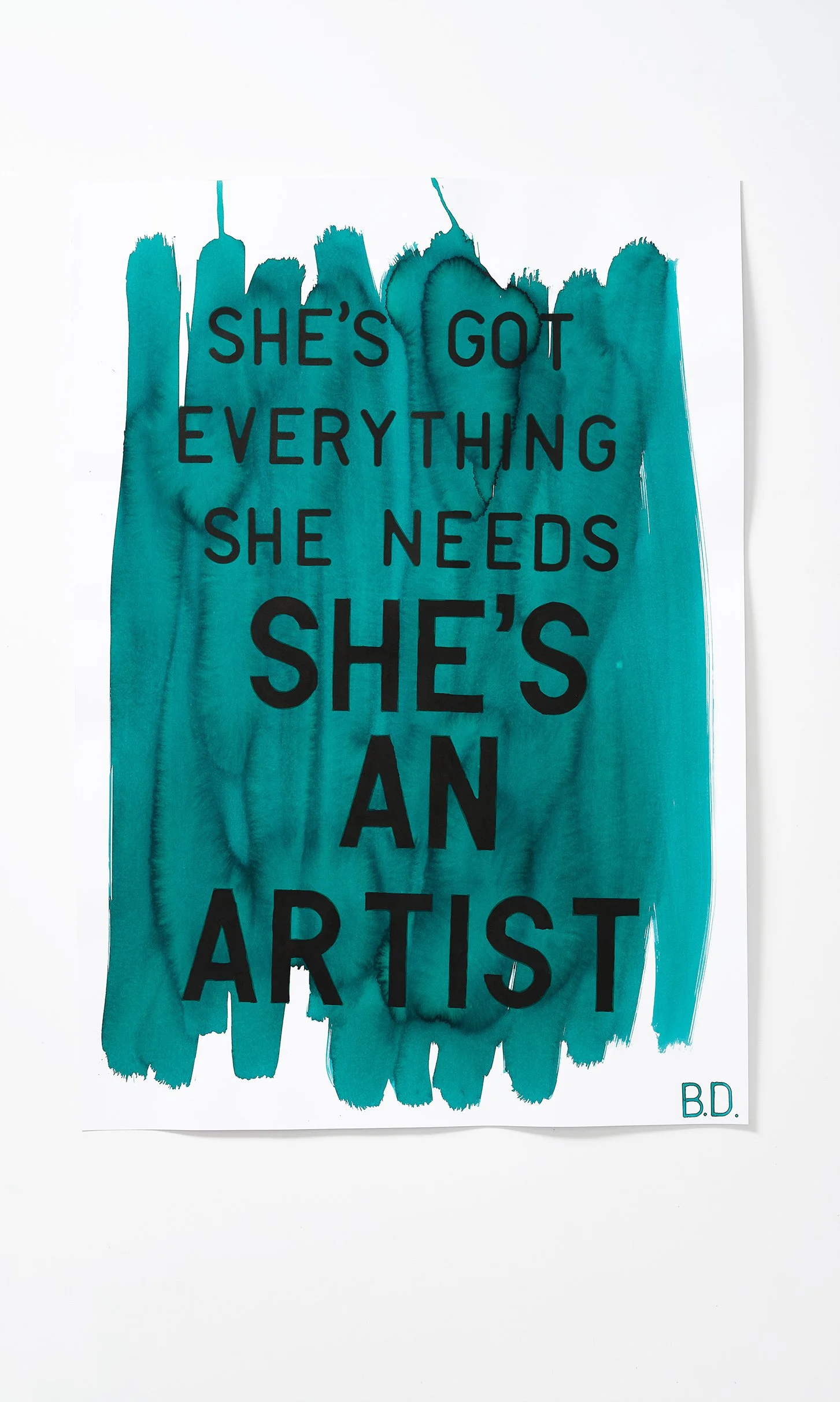The quilt serves many different purposes at once – it describes the often invisible things that go on repeatedly and constantly in a household. The 365 panels on the quilt represent a never-ending list of all the unpaid, and often unacknowledged actions that are performed at home all of the time. At first glance it looks beautiful and ethereal but on closer inspection the low-value, low quality material of its making can be seen – throwaway tissues that are usually used to wipe up unpleasant emissions. The stitching is hasty and the red ink on some of the words has begun to bleed. It is a piece of work that has a light touch – a work made of baby wipes is funny, however, it also speaks of the endless, mundane tasks which happen in the home, that have to be done, and are still usually done by women. This is ultimately a work about the hidden labour involved with making artwork and bringing up a family at the same time. The hidden, unpaid and undervalued jobs that are persistently present whether you are at home or not.
It is also a nod to past women quilters whose artwork has gone unnoticed and unrecognised even as an art practice until recently and the art now considered ‘Femmage’ : “The works themselves were without status because the artists who made them were considered inferior by the historians who wrote about art and culture. Since the works were intimate and had no data or criticism attached to them and were often anonymous, how could these writers identify them as valid, mainstream history?” (Schapiro and Meyer, 1977, p.69).
unapologeticcommunicationplay click on image for accompanying text
The posters are a series of feminist, anti-patriarchal, humour-filled, hand-drawn text-drawings playing with language and colour, utilising quotes from artists, writers, theorists, musicians as well as using our own words. All the posters make feminist statements, some more ambiguous in their meaning than others, and some that can have more than one meaning, setting up questions rather than giving definite statements. The posters deliberately make a non-hierarchical statement about judgements on whose voices are the most important. This alludes to the margin references in Roland Barthes in ‘A Lover’s Discourse’, which is then repurposed in Maggie Nelson’s ‘The Argonauts’; backing up personal experience with theory from many different sources. The posters can be viewed either on their own or together as a visual essay about what it is to be a feminist and to make feminist art. They are intended to be both funny and serious simultaneously, to enable new ways to look at art and life in a humorous way, drawing on a wide and rich seam of references and influences. They are made using traditionally low-status art materials such as stencils, felt-tip pens, colouring pencils, ink, hoover dirt and glitter.
the game and book of enjambments
The Enjambments Game is a questioninglanguageproject that has the ability to produce unfetteredlanguageknowledge. This is a wordplay game that addresses the inadequacy of language to describe feminist subjectivity. It was devised in order to address the difficulty of using existing language to describe and give importance to the drawings that we were making and to come up with better terms and descriptors that more accurately describe drawings that are ‘autobiographical’ and deal with the ‘domestic’ which fail to adequately describe the work being made, or the thinking behind the work in our own practices, and in our collaborative work. The game was devised, using words gleaned from a large wall drawing (the problemsolutiondrawing) based on Emily’s drawing research in order to generate longer three-word combinations that better describe domestic and autobiographical practices, unseating binary and patriarchal concepts and where grey area and nuance are embraced as part of meaning.

enjambments cards
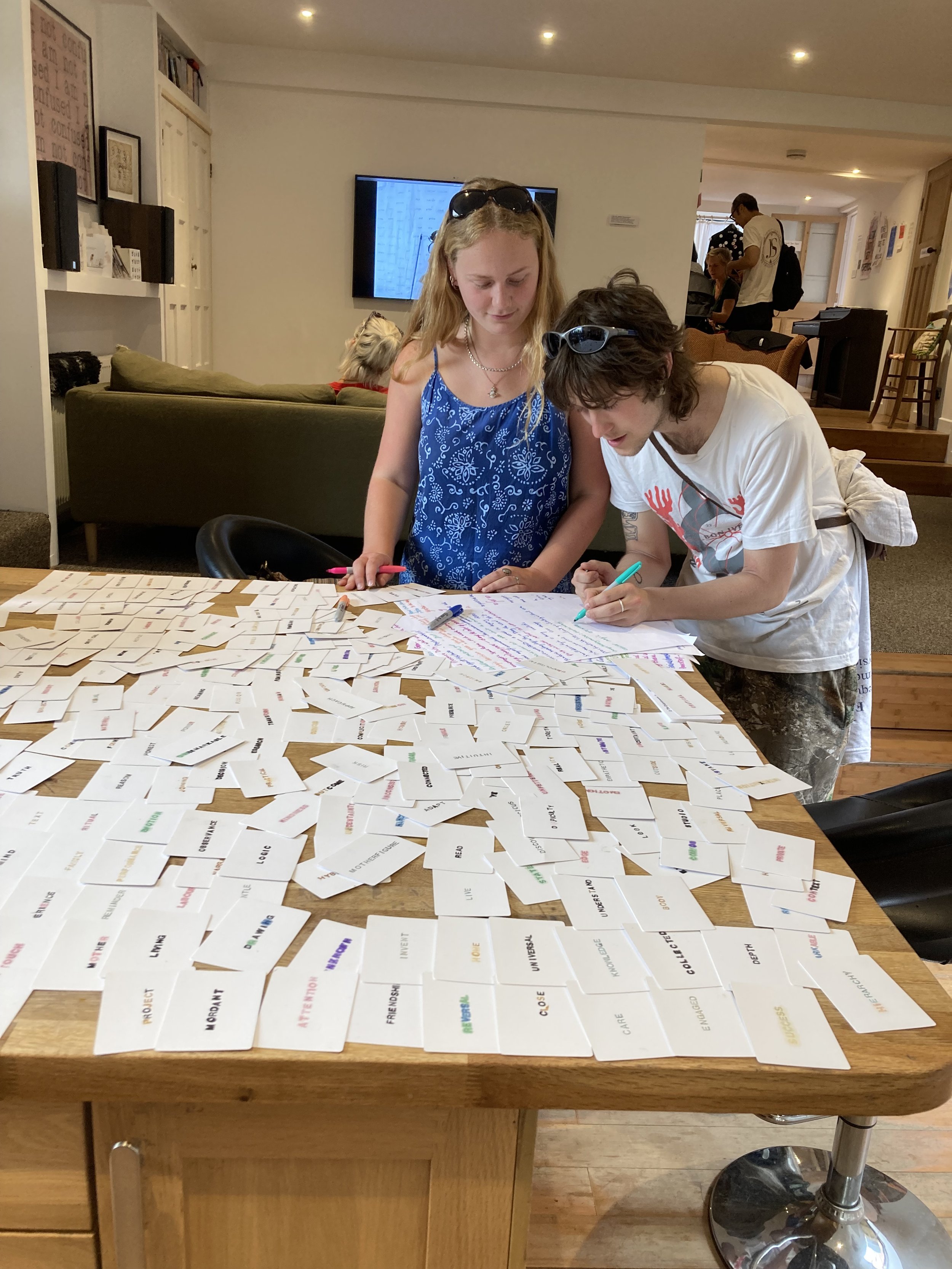
playing enjambments at houseworkwork 2023
bathtime enjambments projection
A rolling projection of the enjambment words in a domestic and intimate setting bringing them to life as embodied articulations.
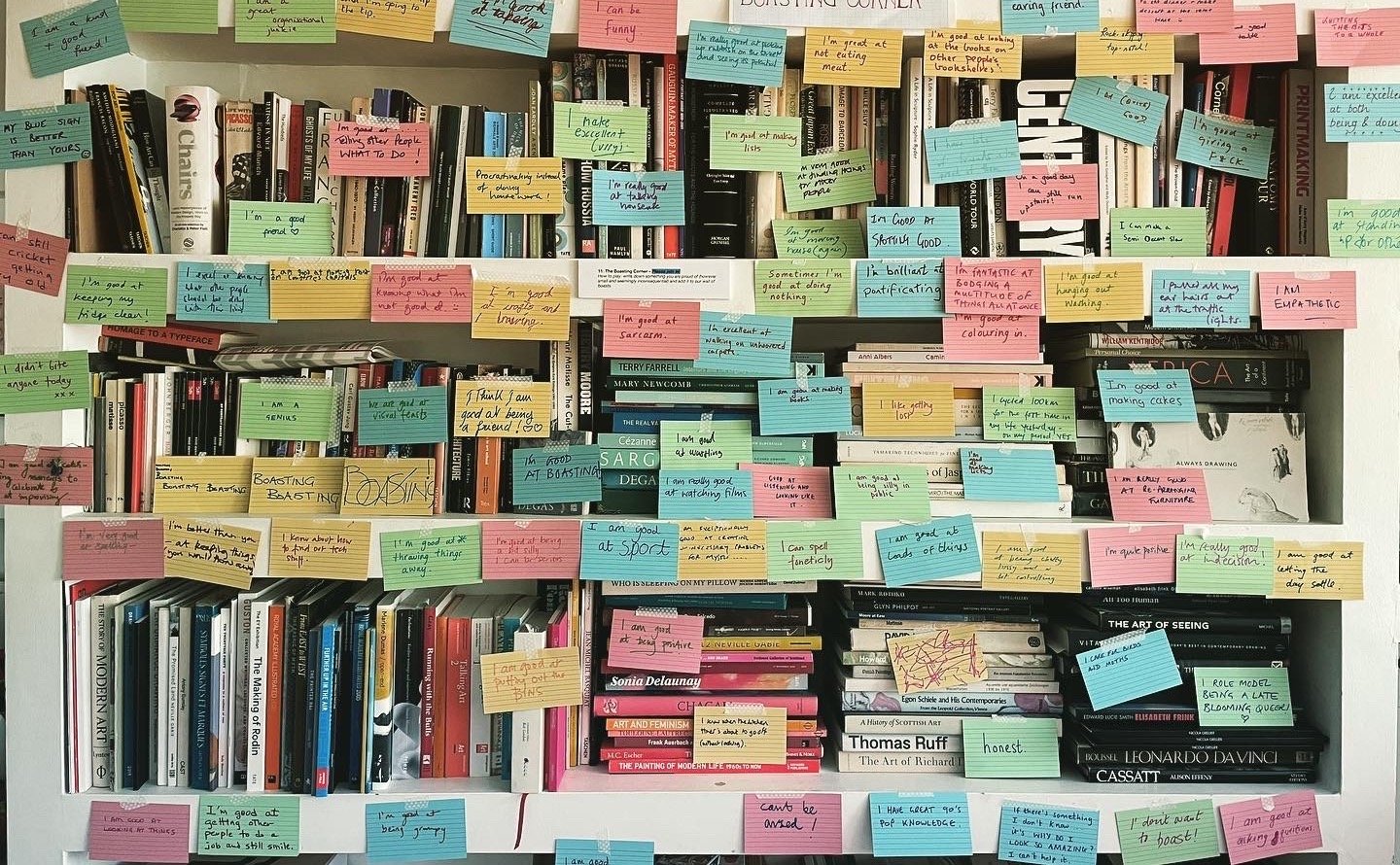
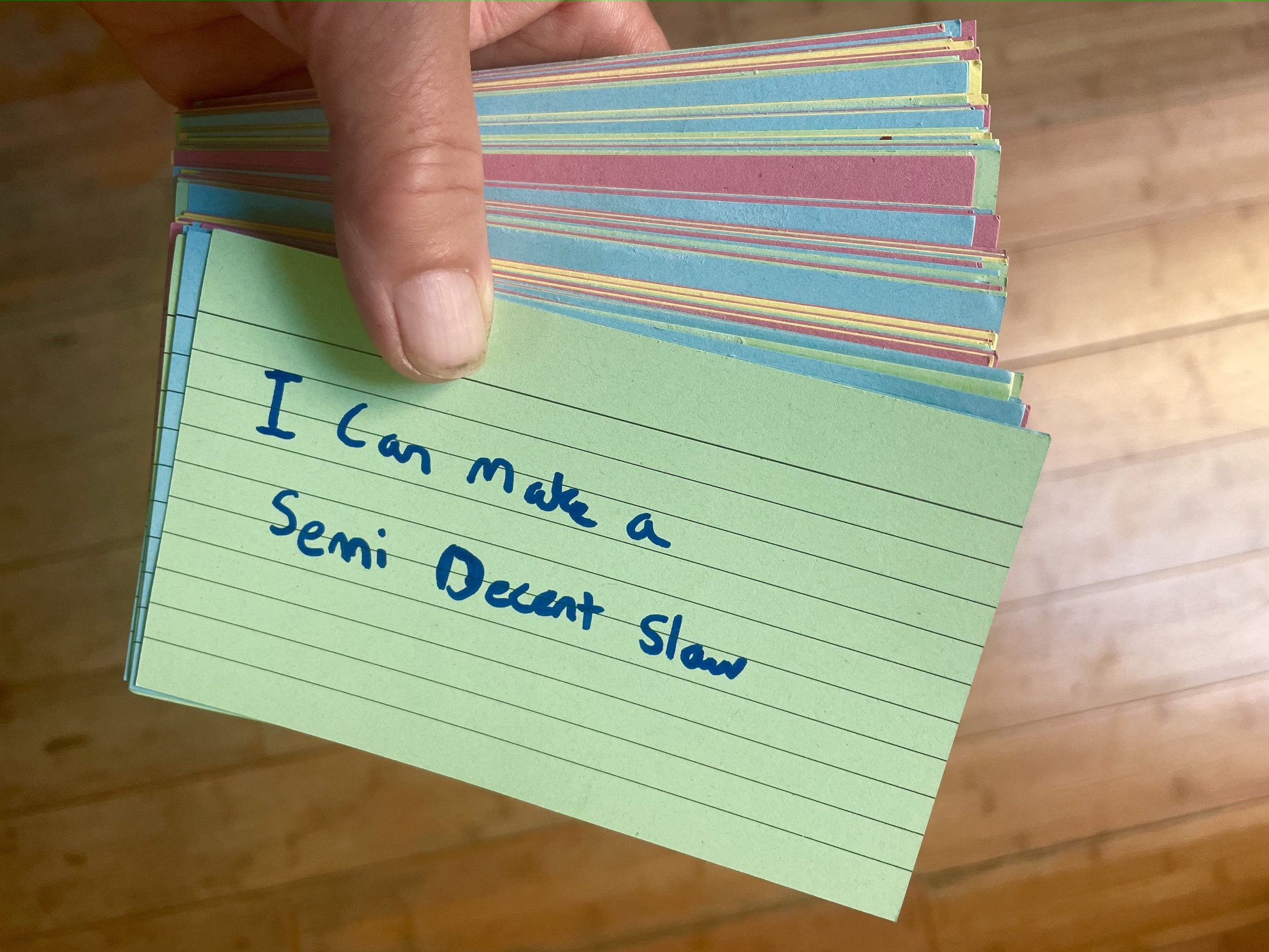
boasting corner
This installation came from an invitation to visitors of our exhibition ‘houseworkwork’ to write down and stick up something that they are good at, however seemingly innocuous. It was a playful and inclusive way to combat the self-deprecation that many women of our generation (including ourselves as women in our 50s) were brought up to subscribe to. Even now Mary Ann Sieghart in her book ‘The Authority Gap’ writes that girls are still taught to underplay their skillsets – although she also suggests: ”Maybe, instead of sending women on assertiveness training courses, we should send men on humility and bullshit-avoidance courses, and the authority gap might be better addressed.”
Photography by Hatty Frances Bell Stephen Lenthall at Article Studio and (both laughing) Collaborative









